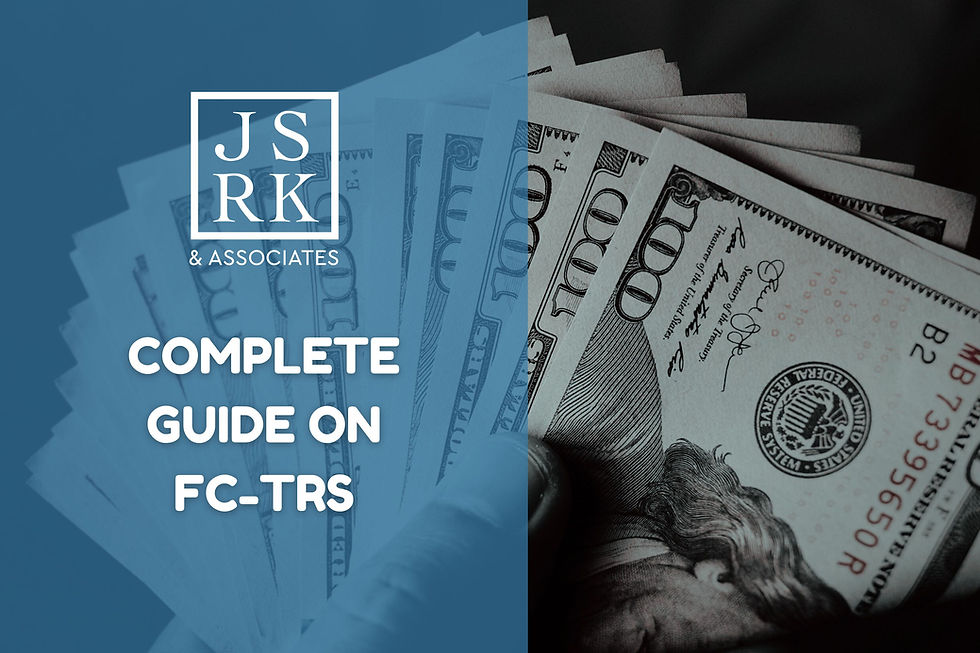FLA Return: Complete Guide to RBI’s FLAIR Filing, Deadlines (July 15), Requirements & Penalties
- CS Rupesh Khade

- Jun 20
- 3 min read
Updated: Aug 31

Foreign Liabilities and Assets (FLA) Return is an annual compliance obligation under the Foreign Exchange Management Act, 1999 (FEMA). Through the RBI’s FLAIR web‑portal, Indian entities report their outstanding foreign liabilities (e.g., inward FDI, ECBs) and foreign assets (e.g., ODI) as at March 31 each year. Accurate and timely filing helps the Reserve Bank of India (RBI) monitor cross‑border financial flows and ensures your entity remains FEMA‑compliant.
1. Who Must File the FLA Return?
An Indian entity must file the FLA Return if any of the following exists as at March 31:
Inward FDI (equity, share‑application money, compulsorily‑convertible instruments)
Outward Direct Investment (ODI) (equity, loans or guarantees to overseas JVs/subsidiaries)
External Commercial Borrowings (ECBs) (all outstanding ECBs)
Applicable entities include:
Companies (public or private)
LLPs
SEBI‑registered AIFs
Partnership firms, trusts, PPPs
Branch offices of foreign companies in India
Exemption: No filing is required if there are no outstanding FDI/ODI/ECB balances on March 31.
2. Key Dates & Deadlines
Event | Date |
Balance‑sheet reference date | March 31 (every year) |
“Fresh” Return due | July 15 |
Filing even with provisional (unaudited) figures by July 15 is permitted; you can later submit a Revised Return once audited accounts are ready.
3. Information to be Gathered
Before logging into FLAIR, compile the following as at March 31:
Equity & Share Application Money
Paid‑up equity by non‑residents, and outstanding share‑application money.
Compulsorily Convertible Instruments
Debentures or preference shares converting into equity.
Loans & Guarantees
Inward loans from non‑residents; guarantees given to overseas entities.
Outward loans/guarantees extended abroad.
ECBs
Principal and accrued interest on all outstanding external borrowings.
Overseas Direct Investments
Equity stakes and loans in foreign JVs or wholly‑owned subsidiaries.
Movement Schedule
Year‑on‑year comparison of each head (this March vs. last March).
Ensure these figures tie back to your audited or management accounts.
4. Step‑by‑Step Filing via FLAIR
Register / Log In
Navigate to https://flair.rbi.org.in/fla/
First‑time users: register as “New Entity User”. Returning users: log in.
Select Return Type
Fresh: first submission for the year
Revised: update an earlier submission (no extra fee)
Complete Web‑Form
Enter data under each schedule; the portal auto‑validates formats.
Validate & Submit
Review error checks, submit, and download the on‑screen acknowledgement.
Revision (if necessary)
After audit, file a Revised Return (select “Revision Request”) to replace provisional figures.
5. Late‑Filing Fees & FEMA Penalties
Late Submission Fee (LSF): ₹7,500 flat per delayed FLA Return, irrespective of delay length.
Tip: Opt for the LSF route promptly to avoid harsher FEMA penalties.
6. Best Practices & Common Pitfalls
Start Early: Gather head‑wise schedules in April–May.
Provisional Figures: File on July 15 even if audits are pending; revise later.
Audit Coordination: Keep auditors in the loop to ensure consistency.
Documentation: Maintain backup worksheets for equity, loans, ECBs, and movement schedules.
Portal Familiarity: Practice on a “dummy” login to avoid surprises during final filing.
7. Frequently Asked Questions
Q1. What if my entity has multiple lines of foreign liabilities/assets?
Combine all heads (FDI, ODI, ECB) in a single FLA Return; there is no separate form.
Q2. Can I file after July 15 with audited figures only?
Yes—but you must pay the Late Submission Fee (LSF) and then file a Revised Return once audited numbers are available.
Q3. Is there a reconciliation requirement with the balance sheet?
While no statements are uploaded, RBI expects consistency between your FLAIR entries and audited accounts.
Conclusion
Timely, accurate web‑based filing of the FLA Return by July 15 is non‑negotiable to maintain FEMA compliance. By understanding applicability, collating precise head‑wise data, and navigating the FLAIR portal adeptly, you can meet your obligations seamlessly. Should complexities arise—especially with large cross‑border exposures—consider engaging a FEMA‑compliance specialist for end‑to‑end support.




Comments